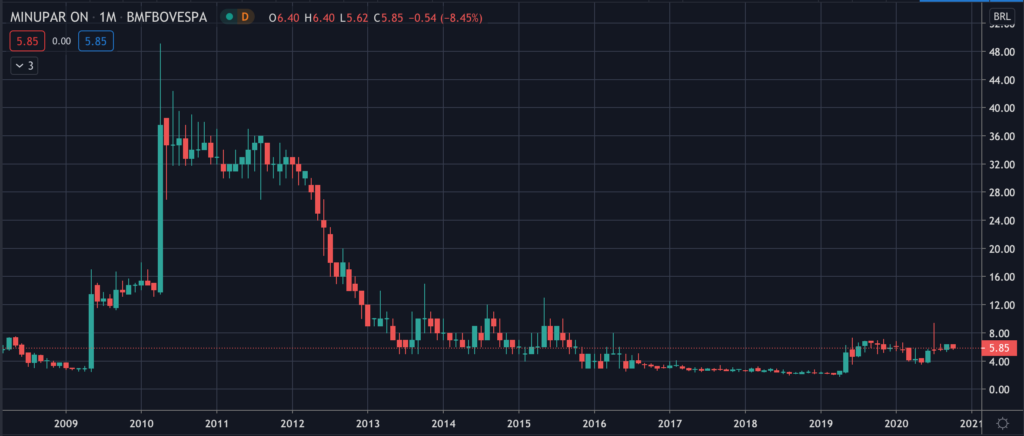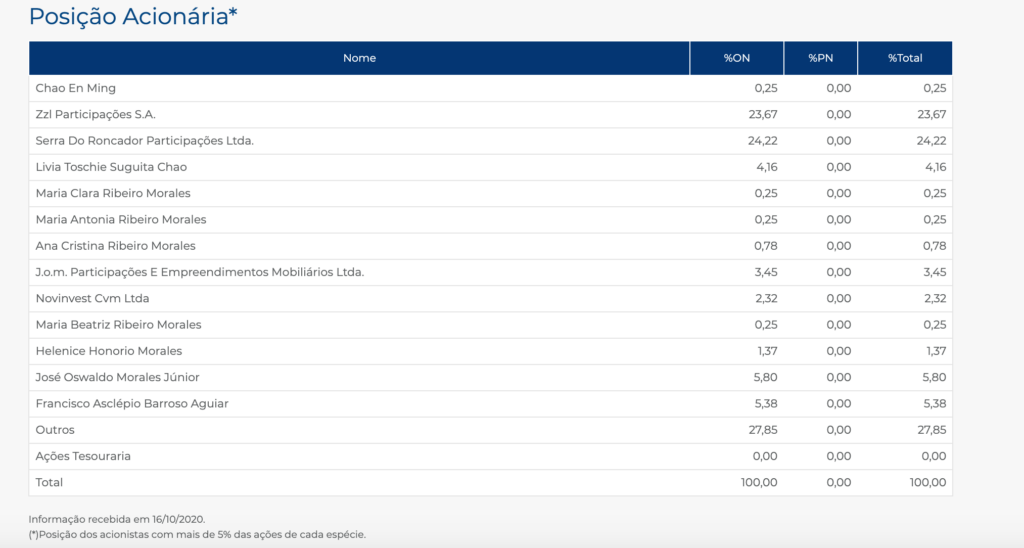Common Stock: Minupar (MNPR3)
Current Market Price: R$ 5.85
Market Capitalization: R$ 41.5 million
*All values in this article are expressed in Brazilian Reais (BRL) unless otherwise noted.
**The bulk of this analysis is based on the company’s most recent audited financial report, which can be found by following this link.

Minupar Stock – Summary of the Company
Minupar is a Brazilian food company focused on production and sale of poultry products. It operates through two segments: industrialized and slaughtering. The industrialized segment offers processed meat. The slaughtering segment offers poultry deboning. The company was founded in 1984 and is headquartered in the state of Rio Grande do Sul, Brazil.
Revenue and Cost Analysis
Minupar had total revenue of R$ 235.5 million in 2019, a significant increase from R$ 199.5 million in 2018. Their COGS in 2019 was R$ 168.7, representing a gross margin of 28%, an increase from 2018’s gross margin of 22%. The company has run a net loss in each of the last three years. In all three years they had a very small operating profit, but due to financing expenses, lost money. In 2019 Minupar had a net loss of R$ 33 million.
Balance Sheet Analysis
Minupar has a very weak balance sheet. Their liquidity position is poor and their shareholder equity position has been negative for years, meaning the company has accumulated losses and its liabilities exceed its assets.
Minupar – Debt Analysis
The company has a small amount of debt outstanding, totaling R$ 477 thousand. R$ 90 thousand of this debt is classified as current.

Minupar Stock – Share Dynamics and Capital Structure
As of year-end 2019 the company has 7.1 million common shares outstanding. Insiders and institutional investors own around 72% of the company’s outstanding shares, with the remaining 28% being held by smaller investors with an ownership stake of less than 5%.

Minupar Stock – Dividends
The company does not pay a dividend.
Minupar Stock – 2 Metrics to Consider
Debt to Equity Ratio
Total Liabilities/Total Share Holder Equity
R$592.8 million / -R$ 393 million = -1.5
A debt to equity ratio of negative 1.5 indicates that Minupar has accumulated losses and has significantly more liabilities than shareholder equity. The company faces the possibility of insolvency and investors should carefully analyze the company’s liabilities before investing.
Working Capital Ratio
Current Assets/Current Liabilities
R$ 63 million / R$ 480 million = .13
A working capital ratio of .13 indicates an extremely weak liquidity position. Minupar may have problems meeting its short term obligations and investors need to monitor their liquidity position carefully.
Minupar Stock – Summary and Conclusions
I don’t see any reason to invest in Minupar stock. The company is in an extremely weak financial position. Their liquidity position is very weak and they have significant outstanding liabilities, for example labor litigation. Their sales are low and they consistently run a net loss.
If I were to allocate to a Brazilian food company, I have companies much higher on my watch list, such as Josepar and Camil.
Disclaimer
This is not investment advice. Nothing in this analysis should be construed as a recommendation to buy, sell, or otherwise take action related to the security discussed. If I own a position in the security discussed, I will clearly state it.
This is not intended to be a comprehensive analysis and you should not make an investment decision based solely on the information in this analysis. I hope this serves as a useful starting point for a more comprehensive analysis, and hopefully draws attention to aspects of the company that were overlooked or merit further investigation. This is by no means intended to be a complete analysis. Again, this is not investment advice, do your own research.